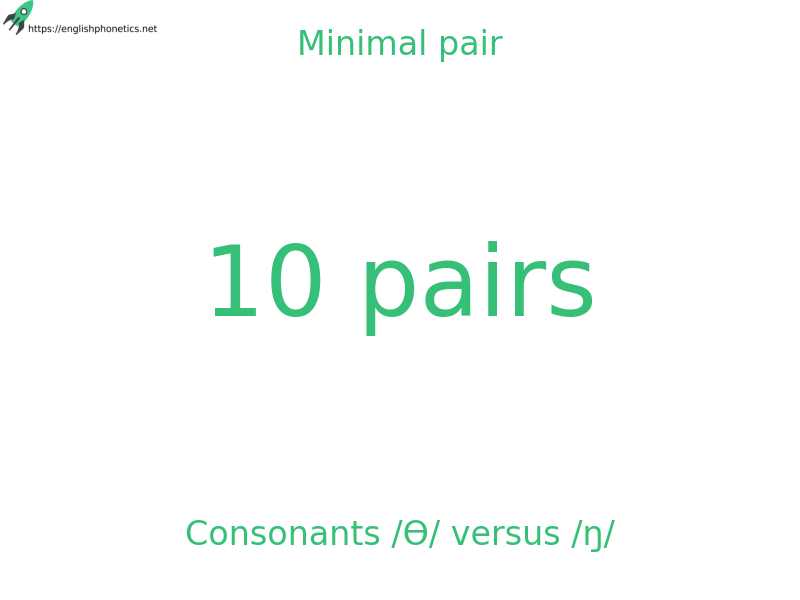Minimal Pair List Consonants /Ɵ/ versus /ŋ/, 10 pairs

The /Ɵ/ sound is spelled with <th>. The /ŋ/ sound is spelled with <ng>.
This is a contrast between a voiceless dental and alveolar fricative and a voiced velar nasal continuant and can only occur finally. It is not a problem, although the sound /Ɵ/ is difficult for many learners.
The mean density value is very low at 0.2%. The list makes 8 semantic distinctions, a loading of 80%.
doth dung
Goth gong
hath hang
Kenneth kenning
kith king
pith ping
withe wing
wrath wrong
wrathful wrongful
wrathfully wrongfully
.
Ready to improve your english accent?
Get a FREE, actionable assessment of your english accent. Start improving your clarity when speaking

John Higgins
John Higgins retired in 2000, having spent the bulk of his career as a British Council English Language Officer working in Thailand, Turkey, Egypt and Yugoslavia and the last fifteen years in lectureships at Bristol University and then running an M.Sc. programme at Stirling University. His main field was EFL, with a special interest in CALL (computer-assisted language learning) in which, together with Tim Johns of Birmingham, he was responsible for important developments in methods and materials.
His publications include A Guide to Language Laboratory Material Writing, Universitetesforlaget, 1969, Computers and Language Learning, Collins, 1984, Language Learners and Computers, Longman, 1988, and Computers in English Language Learning, Intellect Press, 1992, together with numerous papers, reviews and pieces of software. He maintains a web page on minimal pairs and homographs for teachers of English pronunciation skills.


